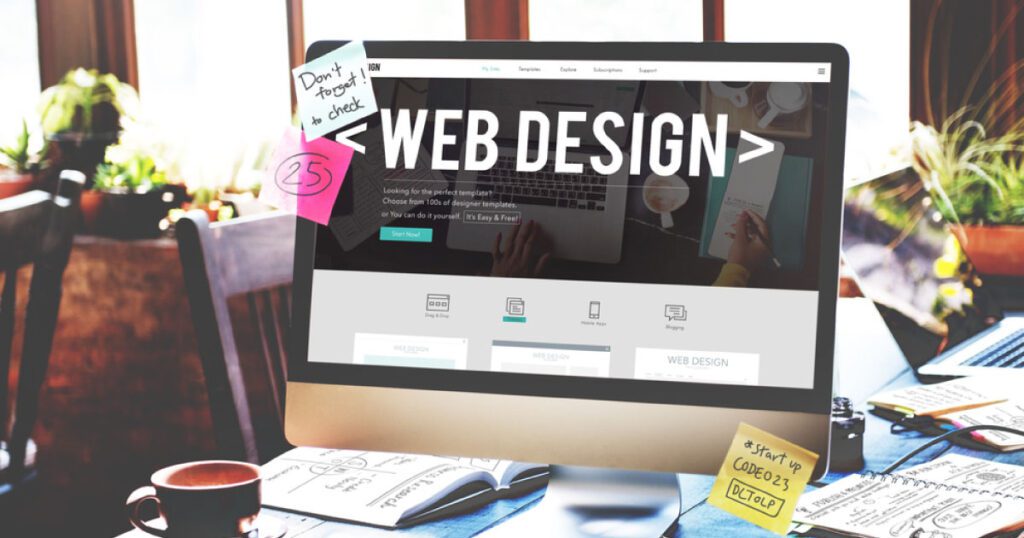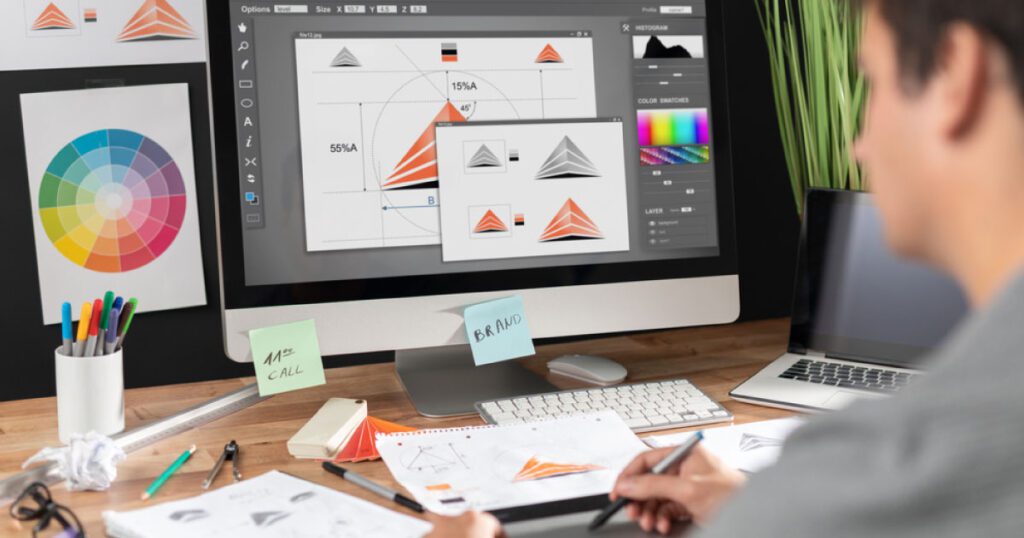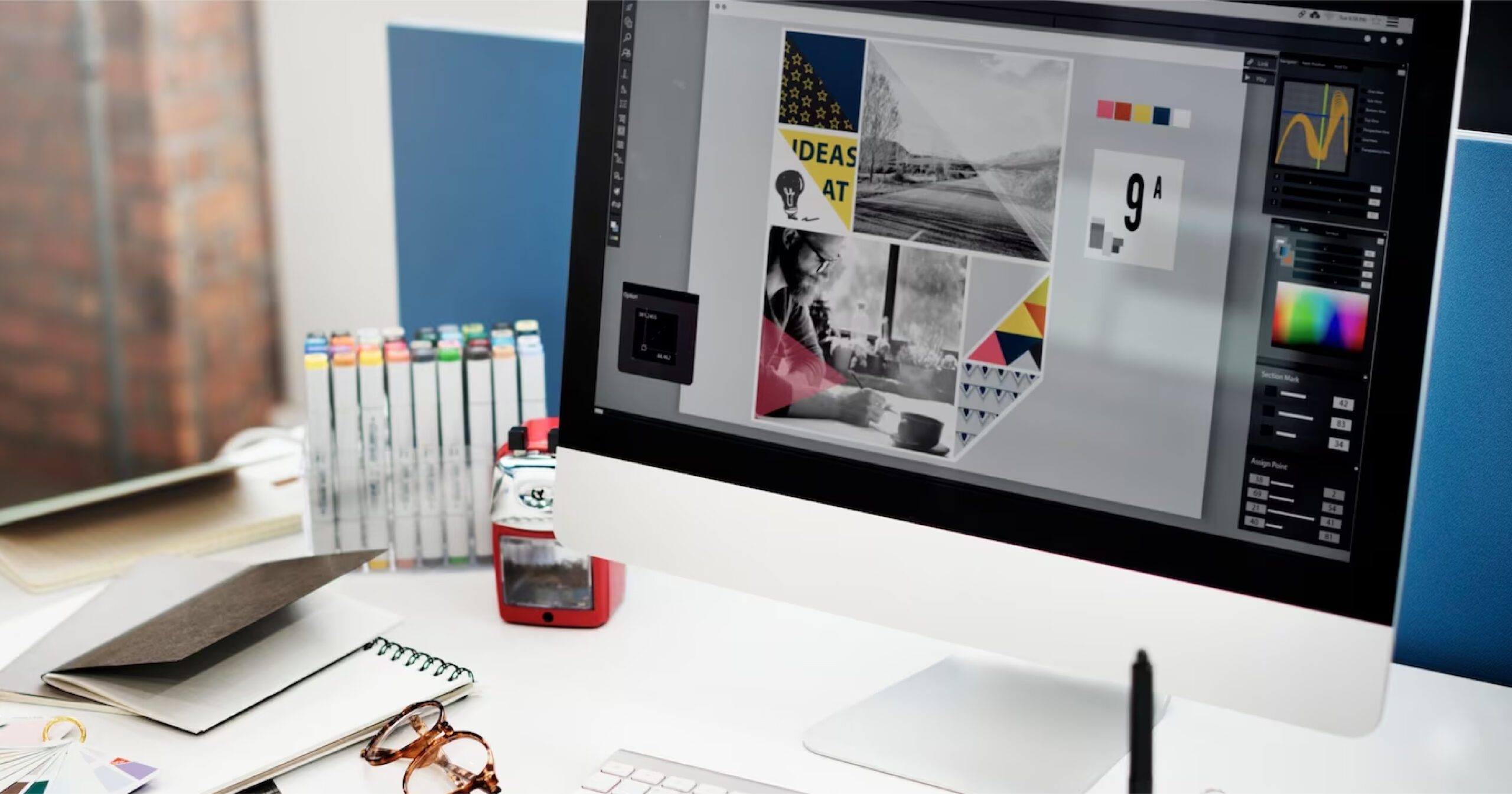Introduction
The demand for skilled designers remains a constant and on the rise in this rapidly changing digital world. In the design landscape, although graphic design and web design are two separate disciplines in their respective rights, they are able to compliment each other and both require technology and call for artistic flair and vision.
However, one of the common mistakes we do is not bridging a difference between graphic design and web design or the conflation of graphic design and web design. It is important to note that although they can be similar, they are not the same. Graphic design deals on one hand deals with visuals, that is, creating visual contents that resonates with a brand or conveys branding messages through images, typography and graphics such as logos, illustrations, posters, newsletters, advertising materials, book covers etc.
On the other hand, web design focuses on the functionality of websites though not forgetting its aesthetic appeal. This implies web design combines visuals and functionality, ensuring the layout, navigation and user interface of websites are all in order while being visually attractive. The difference between graphic design and web design can be seen by understanding their unique roles in the digital landscape. This helps one to fully utilize their potential which will result in aesthetically pleasing and impeccable functioning experiences and this article will do just that.
Definition and Overview
Graphic design
Graphic design involves communicating visually an intended message for an intended audience. In this design landscape, visual elements are created and arranged to convey a specific message, brand identity or idea. As an applied art with roots in antiquity and the Middle Ages, graphic design was initially associated with the introduction of printing in Europe in the 15th century and the development of consumer culture during the Industrial Revolution.
Although it can be traced further back to earlier times when cave paintings and hieroglyphics was the ‘it’ for storytelling. It then went on to develop as a separate profession in the West, which is closely related to advertising in the 19th century. This development allowed for its consolidation in the 20th century.
The need for skilled designers is stronger than ever due to the current large and quick increase in information transmission, especially with the development of new technologies and the requirement to consider human considerations outside the scope of the engineers who develop them. Graphic design can be seen in logos, advertisements, book covers, posters, packaging, fliers and digital contents and are used to create and establish brand identities, also help promote goods and services by being visually engaging.
Web Design

At its core, web design involves the art of arranging and planning contents on a website to ensure its functionality and aesthetics. Most of the best websites out there are designed simply without extra information or contents that may distract, confuse or frustrate visitors, is user friendly with top notch appearance and function well on both desktop and movable devices. Web design evolved alongside the exponential rise of the internet.
Early webpages on the World Wide Web mainly consisted of text and lacked complex design components. But as technology improved, and so did consumer expectations. The problem of developing aesthetically pleasing, approachable user interfaces that allowed for simple navigation was successfully met by web designers. As a result of this progression, HTML, CSS, and JavaScript have been incorporated as essential elements in the toolbox of web designers.
Web design emphasizes on responsive design or usually make it a priority and ensure websites work well on diverse screens and devices. Web design essentially serves as a link between users and the digital world, ensuring that online interactions are not only intuitive for users but also visually appealing and user-centered. Web designers influence how people engage with websites, applications, and other online platforms through strategic layouts and deliberate design decisions.
Key Differences Between the two disciplines
Scope of work
Another way in which we can tell the difference between graphic design and web design is in their scope of work. The creation of visual elements for diverse mediums is the main focus of graphic design work. Print materials, branding, packaging, illustrations, and digital graphics are just a few examples of the many uses that fall under this umbrella. The duty of creating aesthetically appealing information that effectively conveys a message or represents a brand fall to graphic designers. They are masters in creating eye-catching designs with clever use of text, color, and shapes. Establishing brand identities, communicating marketing messages, and improving the overall aesthetic attractiveness of goods and services all depend on this field.
In contrast, web design focuses on shaping the digital landscape, particularly the layout and functionality of websites and web applications. Web designers are responsible for creating user-friendly interfaces that facilitate seamless navigation and interaction. This includes designing page layouts, determining user flow, and implementing interactive elements. Additionally, web designers must consider factors like responsiveness, ensuring that websites adapt seamlessly to various devices and screen sizes. Their work extends beyond aesthetics to encompass user experience, ensuring that visitors have an intuitive and engaging interaction with the online platform.
Tools and technology used

Likewise, another difference between graphic design and web design is seen in the tools and technology used when working. For their work, graphic artists primarily rely on a set of specialist programs. Industry-standard applications like Illustrator for vector drawings and illustrations, Photoshop for image editing and manipulation, and InDesign for layout design are all part of Adobe Creative Suite. With the help of these potent tools, designers may craft complex visual arrangements, alter images, and tweak typography to get the desired visual impression.
In order to make their designs come to life on the digital platform, web designers use a wide range of tools and technology. This involves having a solid understanding of HTML and CSS, the fundamentals of web development. Websites frequently use JavaScript to create interactive features and dynamic elements. In order to produce and manage website content, web designers use platforms for Content Management Systems (CMS), such as WordPress, Joomla, or Drupal. These tools make it possible to build engaging websites with lots of content without having to have a deep understanding of coding.
Skillset requirement

The difference between graphic design and web design can be identified in their respective skillset requirement. A special set of abilities suited to their art of visual communication are possessed by graphic designers. They are knowledgeable about color theory and are aware of the various ways that various tones can elicit feelings and express ideas. They also have a sharp eye for typography, expertly choosing typefaces and positioning content to improve readability and aesthetic appeal. A designer's ability to successfully balance and arrange parts within a composition depends on their spatial awareness. Furthermore, creating high-quality visual material requires expertise in graphic manipulation, illustration, and picture editing.
The skill set needed for web design requires going beyond aesthetics and include knowledge of user experience (UX) and user interface (UI) design. They need a thorough understanding of responsive design principles to make sure that websites work properly on a variety of devices. Creating intuitive navigation, ensuring content is easily available, and improving user interactions are all part of UX design knowledge. Web designers are empowered to bring their designs to life in the digital space by having a basic understanding of HTML, CSS, and frequently JavaScript. This enables them to build interactive and dynamic web experiences. Furthermore, for websites with a lot of information, CMS platform proficiency is frequently required.
The Intersection of Graphic and Web Design
The difference between graphic design and web design frequently converge in the dynamic design landscape, forming an intriguing crossroads where creativity and functionality meet. The difference between graphic design and web design becomes more complex as the digital world continues to develop. This is especially clear in the desire for adaptable designers who can smoothly transition between the two disciplines. Given their proficiency in visual communication, graphic designers frequently explore web design ideas to expand their skill set. To generate visually appealing digital content, they might investigate topics like user interface (UI) design and learn the fundamentals of coding.
On the other hand, web designers frequently use graphic design concepts to improve the aesthetic appeal of their digital works. They use ideas from typography, color theory, and spatial design to create visually appealing and interesting web experiences. This combination of abilities not only broadens designers' creative toolkits but also places them in a strong position to succeed in a design market that is changing quickly. In order to create exceptional digital experiences, graphic and web designers must work effectively together.
Although there is a difference between graphic design and web design and they have different areas of expertise, a successful design process is built on the foundation of their complementary skills. In order to create aesthetically engaging web content, graphic designers must have a thorough understanding of branding, visual aesthetics, and content arrangement. Their experience guarantees that the general layout of the website complies with the established business identity.
Web designers, on the other hand, are experts at creating user-friendly interfaces, enhancing the user experience, and ensuring that the functionality of the website satisfies the requirements of its target audience. The seamless integration of design and functionality is made possible by their skill with coding and understanding of interactive aspects. Together, graphic and web designers can use their individual abilities as well as their collective knowledge to produce highly practical and aesthetically pleasing digital experiences. The success of this relationship depends on open communication and a common vision.
Although there is a difference between graphic design and web design, designers may combine their individual expertise to create cogent, effective digital solutions by communicating openly and understanding one another. Additionally, this collaborative strategy goes beyond the actual design process. It includes continuous communication to deal with any design revisions or changes that may be necessary, ensuring that the finished item continually satisfies the highest requirements for usefulness and quality.
Choosing Between Graphic Design and Web Design as a Career
Your hobbies, strengths, and professional objectives must all be carefully considered before choosing between web design and graphic design.
Self-Assessment: Consider what really gets you excited. Do you like to make visually appealing content, or do you want to design engaging online experiences? This is necessary as there is a huge difference between graphic design and web design. Think about your current skills and your strongest suit. Are you good with technology and code, or do you have a penchant for aesthetics? Making the best decision depends on realizing your strengths. Consider where you want to be in the future. Are you interested in helping businesses and organizations with their internet presence, or are you looking for a profession that focuses on print materials and branding?
Academic Background: Research educational programs that fit the direction you want to go in. Notice the difference between graphic design and web design courses. While web design programs stress coding and interactive design, graphic design degrees put more of an emphasis on aesthetic communication. Examine the curricula offered in each program's courses. For graphic design, pay attention to typography, color theory, and software tools. For web design, pay attention to HTML, CSS, and UX/UI design.
Development of skills: Self-Learning and Practice: To develop a feel for both graphic and online design, look into beginner classes or tutorials. To determine your level of comfort and interest in each area, practice simple tasks. Use what you've learned to create your own design projects. This practical experience will provide you with insightful information on what field appeals to you.
Examine current job roles and industry trends: Examine job descriptions for graphic designers and web designers to gain insight into the qualifications and duties needed for each position. This is to understand and be aware of the difference between graphic design and web design job roles before you commit to any of them. Keep up with the most recent trends and advancements in both industries by reading articles and blogs. You will get an idea of the opportunities and demands that are now present.
Informational and networking interviews: Request informational interviews from experts in both subjects. Inquire about their experiences, routines, and the parts that give them the greatest joy. This may offer insightful information. Try something new. If at all possible, take on freelance or independent graphic or web design assignments. You will be able to determine which field best fits your preferences and abilities courtesy of this practical experience.
Consider hybrid roles: Some jobs can require a combination of graphic and web design expertise. Think about whether a job of this nature could be intriguing to you as it could bridge the difference between graphic design and web design for you. Seek advice and guidance. Consult with experts in the field, educators, or mentors. Based on their experiences, they can provide insightful commentary.
Embrace your gut feelings: After careful research and reflection, trust your gut and listen to it. Think about the industry that both personally and professionally speaks to you.
A Case Study
Fusion Festival is an annual multicultural celebration of diversity via music, art, and cultural experiences that takes place in North Eastern Germany. The festival's directors set out some time back on a mission to redesign their website in order to more accurately reflect their lively, open spirit, giving it a fresh look while retaining their essence. This was also marked by an updated product access, enhanced connectivity, and an integrated news ticker. This project served as an excellent example of how graphic design and web design can work together to create immersive digital platforms that fascinate and engage audiences throughout the world despite the difference between graphic design and web design.
The graphic and web design teams worked together on the overhaul of the Fusion Festival website. A dynamic visual identity was developed by the graphic design team using a lively color scheme and culturally representative symbols. The web design team then incorporated this identity into a compelling online experience, making sure to include interactive components and a user-centric layout. Collaboration discussions and frequent feedback loops were essential to perfecting the design aspects.
Positive feedback about the new website resulted in higher user engagement and social media traction. A truly immersive and visually stunning digital experience that effectively engaged a varied global audience, the project is an example of the transformational power of effective teamwork. The project is a prime example of the transformative potential of successful collaboration in creating an effective digital platform.
Conclusion
Your interests, skills, and professional objectives will ultimately determine whether you choose a path in graphic design or web design. As discussed above on the difference between graphic design and web design, web designers are experts at creating interactive and user-friendly online experiences, whereas graphic designers excel at visual communication and branding. You can choose a career path that best fits your artistic drive and professional objectives by studying the peculiarities of each industry. Whatever route you take, the design industry welcomes your special skills and guarantees a vibrant and rewarding career.



